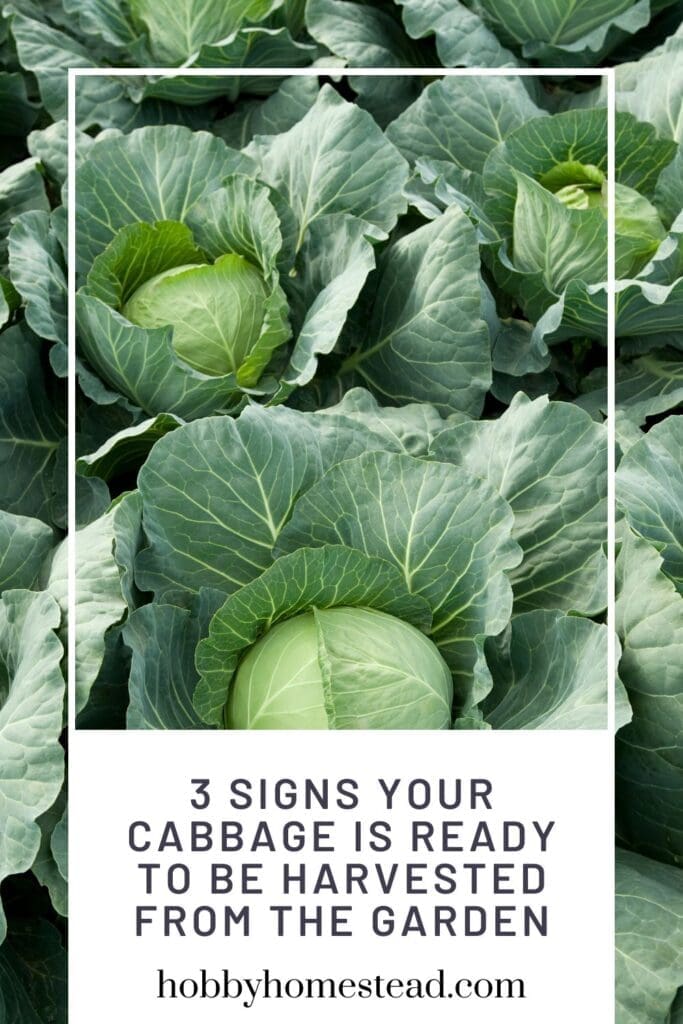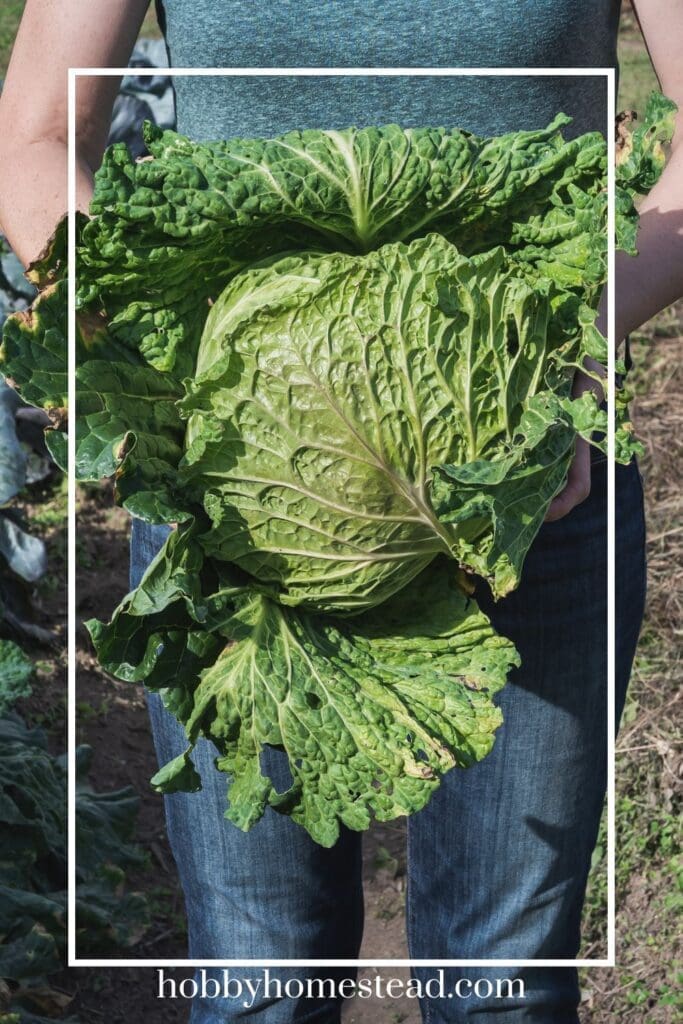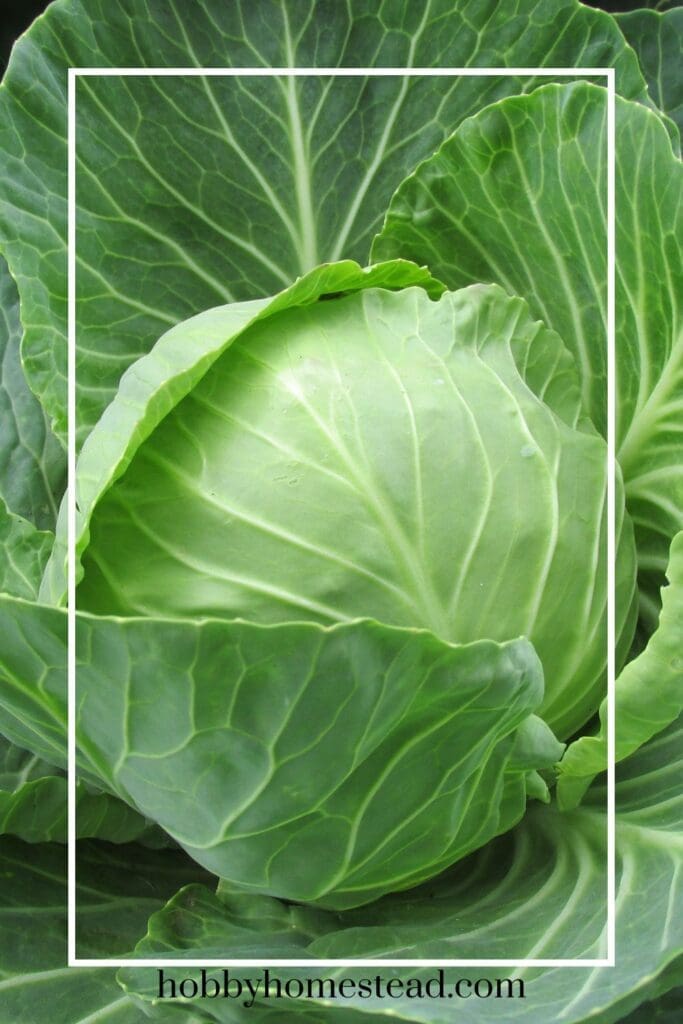In this guide, we’ll cover 3 Signs Your Cabbage Is Ready to Be Harvested from the Garden so you can enjoy full, flavorful heads at their peak. If you’re growing cabbage this season, knowing when to pick it is just as important as how you grow it.
Whether you’re growing green, red, or Savoy cabbage, harvesting at the right time makes certain you have the best texture, taste, and storage life. Let’s take a look at the key signs your cabbage is telling you it’s ready to leave the garden and head to your kitchen.

Cool-Weather Garden Produce
Cabbage is a cool-weather garden staple, and when it’s ready to harvest, there’s nothing more satisfying than cutting into a crisp, dense head you’ve grown yourself. But how do you know exactly when it’s time to harvest for the best flavor, texture, and storage life? Harvest too soon, and you risk small, underdeveloped heads. Wait too long, and the cabbage could split or become tough.
Let’s talk about three easy-to-spot signs that your cabbage is ready to pick. Whether you’re growing green, red, Savoy, or Napa cabbage, these tips will help ensure you get the best possible yield from your homestead garden.
Key Indicators for Harvesting Cabbage
If you’ve been nurturing cabbage in your homestead garden, you may be wondering: How do I know when it’s ready to pick?
🥬 1. Firm, Dense Heads
One of the clearest signs your cabbage is ready is the firmness of the head. Give the cabbage a gentle squeeze. If it feels solid and dense with no give, that’s a good indicator it’s ready for harvest. A soft or spongy head usually means it needs more time, but be careful not to wait too long. Over-mature heads can split, especially after a rain.
Check Without Causing Damage:
Cup the cabbage head in your hand and apply light pressure. Enough to test the density without twisting or bending the stem. Try not to tug or pull. This can stress the plant or cause splitting prematurely.

2. Mature Size Based on Variety
Check your seed packet or plant label for the expected mature size and days to maturity. Most cabbage heads are ready between 70 and 100 days after transplanting. Green cabbage typically reaches about 4–10 inches in diameter, depending on the variety. Red, Savoy, and Napa cabbage types will vary, so knowing what size to expect is key.
🌿 3. Leaf Color and Stem Condition
Another great clue is color and the look of the outer leaves and stem. Mature cabbage heads will have a healthy, vibrant green (or red) color with tightly wrapped leaves.
If the outer leaves begin to yellow or the stem thickens and appears stressed, your cabbage may be at or past peak. It’s better to harvest now than risk a split head or pest damage.
How Often Should You Check for Ripeness?
Once your cabbage is within two weeks of its expected maturity date, start checking it every few days. Morning is the best time, especially if you’re in a warmer climate. Firmness and size can change quickly with good weather, so keep an eye on them.
Timing Tips for Best Flavor
- Morning harvests are ideal for crispness and flavor.
- Before a big rain is a great time to harvest to avoid splitting.
- Don’t wait too long! Overripe cabbage is still edible, but tougher and more likely to attract pests.
Bonus Harvest Tip: Leave the Base to Encourage Regrowth
When harvesting, use a sharp knife to cut the head just above the outer leaves, leaving the base and a few lower leaves intact. With proper watering and care, many cabbage varieties will sprout secondary heads—smaller but still usable. This is a great way to get even more out of your planting without replanting.

Know When to Harvest Cabbage Like a Pro
By paying attention to firmness, mature size, and leaf and stem color, you’ll have everything you need to tell when your cabbage is ready for harvest. Start checking regularly as the expected maturity date nears, and aim to harvest early in the day for the best quality.
Use gentle hands to check for readiness without harming the plant, and consider leaving the base intact to encourage a second harvest. With a little timing and care, your cabbage crop can deliver incredible results from your garden to your table.


